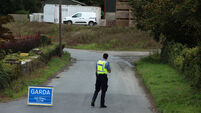Irish construction sector sees broad-based decline as new business dries up

Output fell across the housing, commercial and civil engineering sectors.
Construction activity fell again in August, as builders flagged a renewed reduction in new business with output falling across the housing, commercial and civil engineering sectors.
The latest AIB Construction Purchasing Managers’ Index shows purchasing activity was also scaled back, but companies continued to increase employment, in part due to positive expectations for the future.
Construction firms also reported a further sharp increase in input costs and an extension of suppliers' delivery times.
The headline index was below the key breakeven level of 50 for the fourth successive month. The August reading of 45.9 was also lower than the 47.1 level recorded in July, indicating a faster pace of contraction in construction activity last month.
For the first time in a year and a half, all three categories of construction saw a drop in activity. Commercial activity fell for the first time in seven months, albeit slightly. Work on housing projects was down for the fourth month running, and at the fastest pace since November 2023, while civil engineering activity also fell at a sharper rate than in July.
The index is compiled by S&P Global from responses to questionnaires sent to a panel of around 150 construction companies across Ireland. Where total construction activity decreased, panellists linked this to a lack of tender opportunities and muted customer demand. New orders also fell in August, ending a six-month sequence of growth. Panellists reported delays in decision-making by customers amid a tightening of market conditions.
"The sectoral breakdown of the August PMI suggests the downturn in activity levels is becoming more broad-based," AIB Chief Economist David McNamara said. "Indeed, for the first time since February 2024, all three sub-sectors registered a decline in activity. The commercial sector ended a six-month period of expansion, falling back into contraction territory, albeit the pace of decline was relatively mild. Residential construction activity contracted for a fourth consecutive month and at a marginally faster rate compared to July.
Meanwhile, civil engineering retained its position as the worst-performing of the three sub-sectors. It registered a fourth straight month of contraction."
Input costs increased sharply, with the rate of inflation remaining above the series average. Material shortages also meant that suppliers' delivery times lengthened to the largest degree since February. The usage of sub-contractors decreased for the second consecutive month, and at a solid pace that was the fastest since November 2023.
Despite this, the availability of sub-contractors deteriorated markedly, while the rates they charged increased sharply again.
On a more positive note, construction firms continued to increase their staffing levels, lengthening the current period of jobs growth to six months," Mr McNamara said. "There were also some encouraging signs from the report’s outlook gauge. Firms’ level of optimism regarding increasing activity levels over the coming 12 months strengthened in August. An anticipated improvement in housing activity supported this uplift in business expectations."













